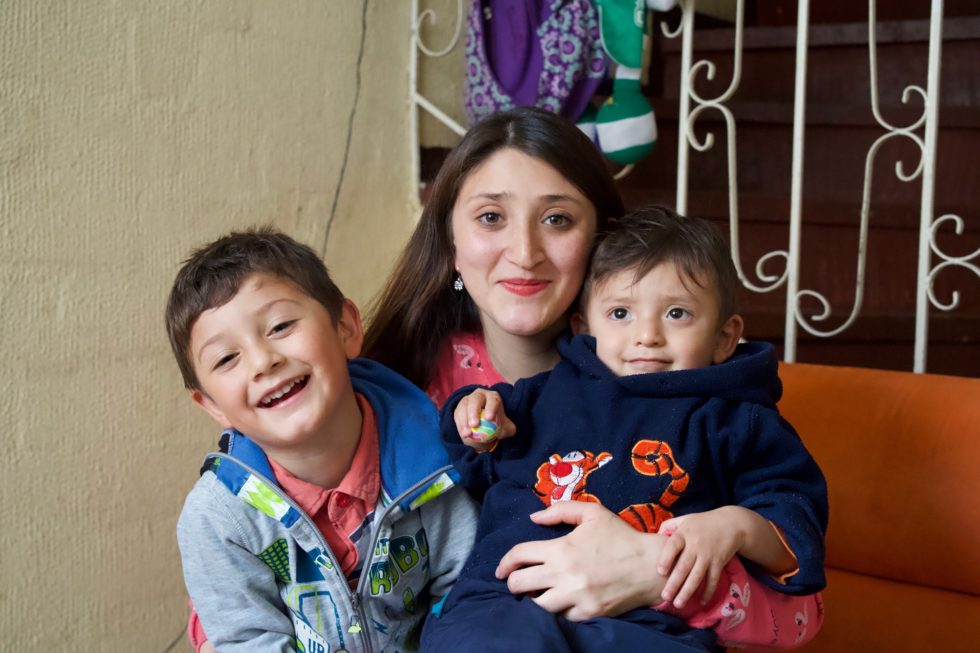The cost of basic food has risen all around the world because of the pandemic, and families living in poverty can’t keep up. But this Giving Tuesday, Holt donors have the chance to do something about it and feed a hungry child.
Can you imagine not having enough food to feed your child?
This is the heartbreaking reality for so many families living in poverty around the world. Unfortunately, food scarcity is nothing new to families working each day, hoping to make enough daily wage to buy food. But in 2020, there are new reasons why children are going hungry. (The same reason why Holt’s 2020 Giving Tuesday campaign is all about giving food to hungry children!)
Here’s why children are going hungry:
1) Many families can’t go to work due to the pandemic. They don’t have money for food.
2) When schools close, many children miss out on free lunch or breakfast — often their only solid meal of the day.
And then there’s a third, more long-lasting reason…
3) Food costs have gone up.
And they’ve gone up by a lot. Families living in poverty can’t keep up.
Even the most basic food items have become much more expensive due to inflation caused by the pandemic. In some places, we estimate that it costs a family $2 more to buy food each day. For a family living in poverty that’s surviving on just a few dollars a day total, these higher prices mean that they can’t buy food and their children are going hungry.
These are just some of the food cost changes that have occurred since the pandemic began:
- The cost of a bottle of milk in China rose by 60%, pork by 40% and flour by 20%.
- In India, eggs are 20% more expensive, dhal (a daily staple, made from lentils) is over 22% more expensive and the cost of potatoes and onions have both nearly doubled.
- In Cambodia, even rice — which many Cambodian families grow themselves or purchase from neighbors — is much more expensive.
- Transportation issues because of the pandemic caused fruit and vegetable prices to rise in Colombia.
- In Ethiopia, the price of dairy products, cooking oil and false banana (a staple food) have all significantly increased. Infant formula is more expensive, and a Holt-supported orphanage is struggling to buy enough for the babies in its care.
- Not only is food more expensive in Haiti, but food has become inaccessible to the average family because of transportation shutdowns between urban and rural areas
- In Mongolia, all food has become an average of 8% more expensive. Per a recent survey by the World Bank, nearly half of poor residents were uncertain about their ability to obtain food in the previous 30 days due to lack of money or rising prices.
- Rice, meat, fish and vegetables are all more expensive in the Philippines, as well as usual canned goods like sardines.
- In Thailand, even rice — the primary food for all Thai families — is 20% more expensive.
But this Giving Tuesday — Tuesday, December 1 — you can help feed a hungry child and their family.
These food cost increases are bleak. But even more heartbreaking is the reality for children around the world: not enough food.
Because the situation is different in each country, the help you offer will look different from place to place and family to family. In some places, your Giving Tuesday gift will rush an emergency food delivery to a family’s home. Or your gift could help feed a child at his or her school, or it might go towards providing infant formula to a mom who can’t afford it anymore. Whatever and however much you can give this Giving Tuesday will help fill a child’s empty belly and take away their hunger.
Any amount you can give on Giving Tuesday 2020 will fill the food cost gap for a family and give food to a child who hasn’t had enough to eat during this pandemic.


